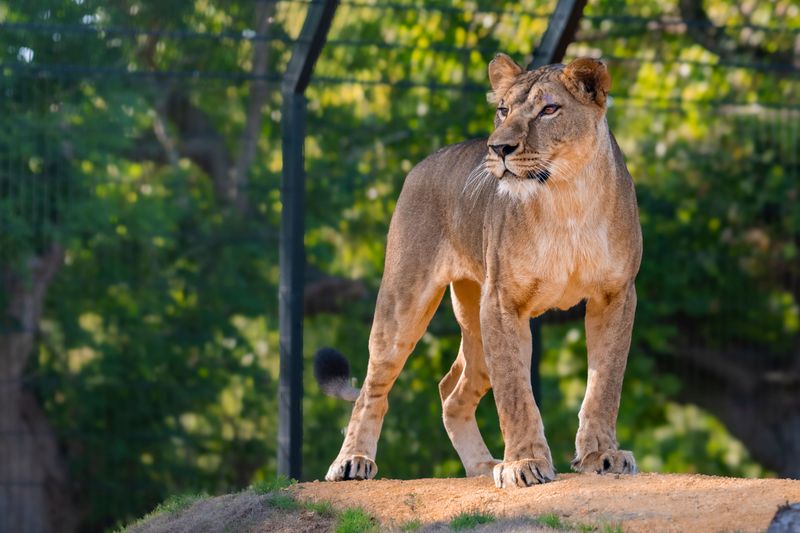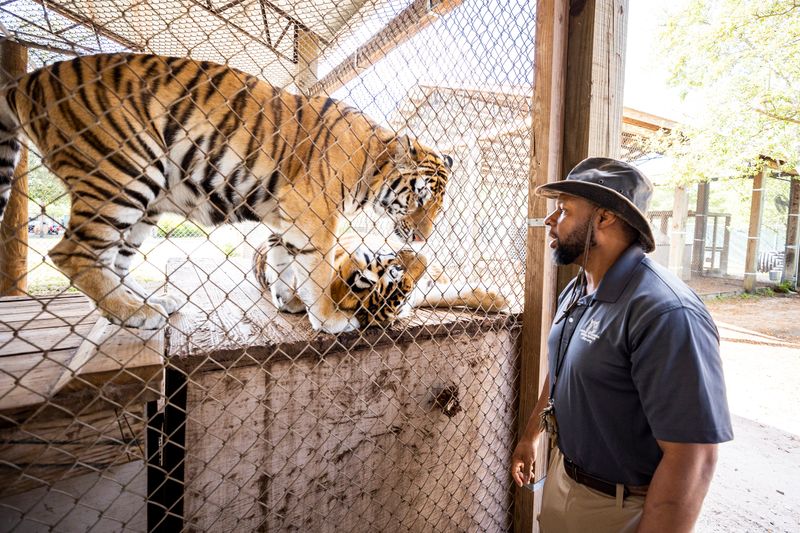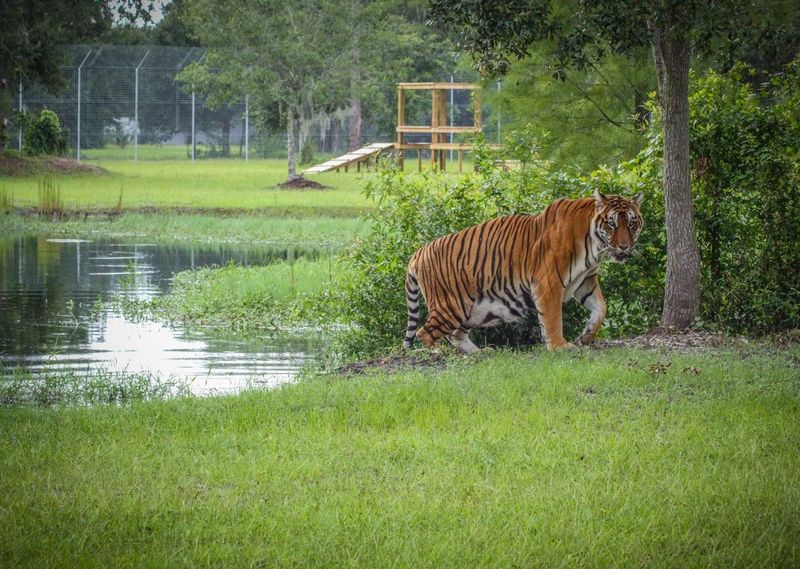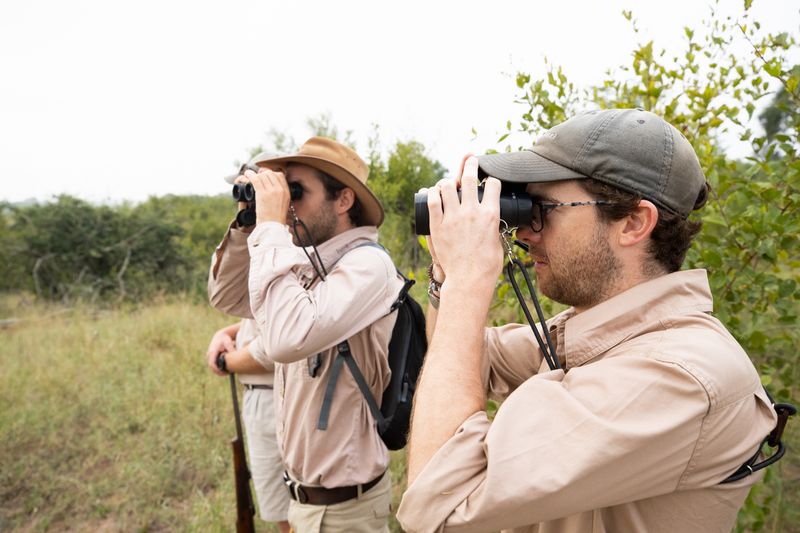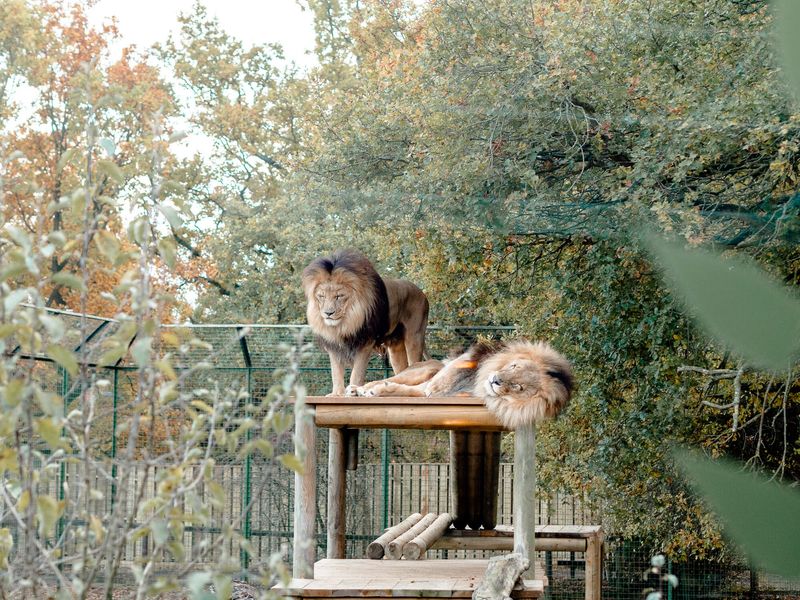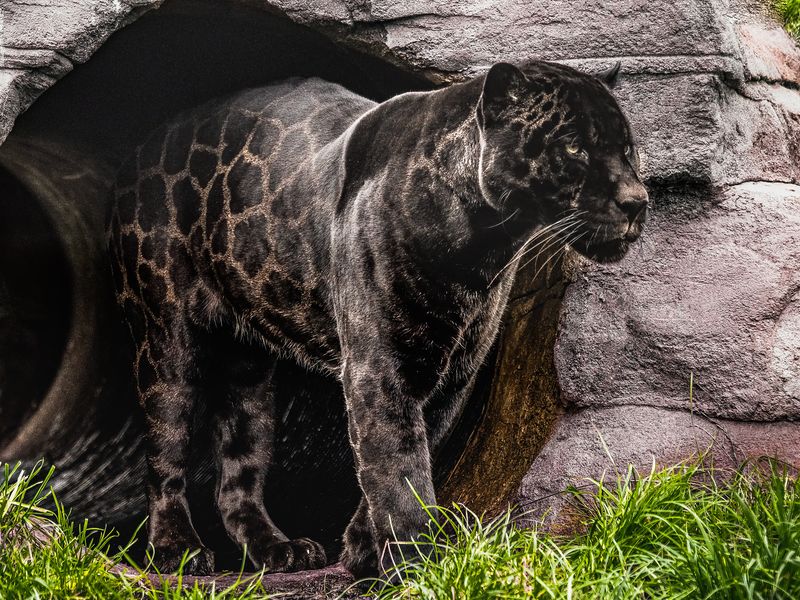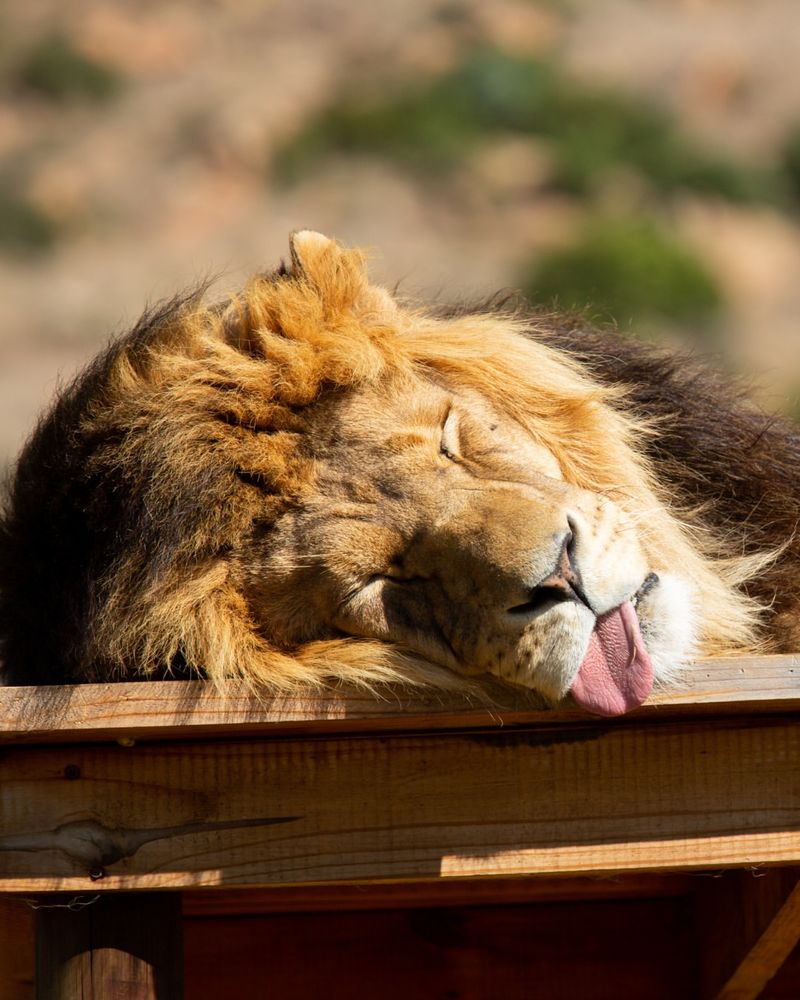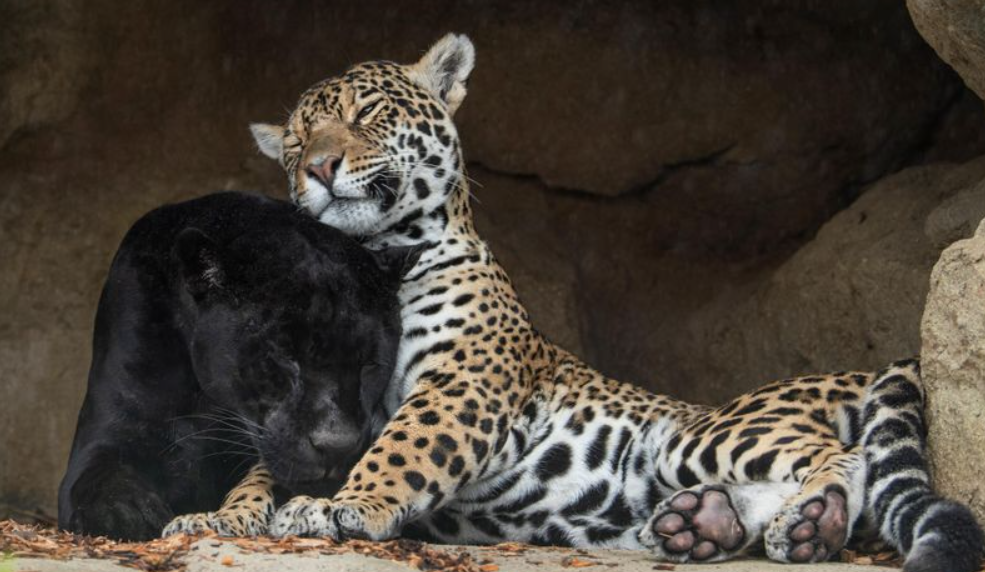📖 Table of Content:
- 1. Learn About the Sanctuary’s Mission Before Visiting
- 2. Book Tickets in Advance
- 3. Comfortable Walking Shoes
- 4. Weather-Appropriate Clothing
- 5. Bug Spray
- 6. Binoculars for a Closer Look
- 7. Camera (Without Flash!)
- 8. Notebook or Wildlife Guide
- 9. Small Donation
- 10. Check & Follow the Rules
- 11. Leave Strong Perfume at Home
- 12. Respect the Quiet Zones
- 13. Be Mindful of What You Bring
- 14. Come with a Curious & Respectful Attitude
- 15. Support the Sanctuary Beyond Your Visit
Visiting a big cat sanctuary is an exciting and unforgettable experience, but proper preparation is key to making the most of it. Choosing the right clothing, such as comfortable walking shoes and weather-appropriate attire, ensures you stay comfortable throughout your visit. Since many sanctuaries have large outdoor areas, bringing essentials like sunscreen, a hat, and a reusable water bottle can make a big difference. Bug spray is also a good idea if you’re visiting in warmer months, as some locations may have mosquitoes or other insects. Preparing for the physical aspects of the trip allows you to focus on observing and learning about these incredible animals.
Beyond packing the right items, understanding and following the sanctuary’s rules is essential for a respectful visit. Many sanctuaries have strict policies against loud noises, flash photography, and direct interaction with the animals to ensure their well-being. It’s important to check in advance whether reservations are required, as some facilities limit visitor numbers to reduce stress on the animals. Avoid wearing strong perfumes or carrying loose items, as big cats have sensitive noses and might react unexpectedly to unfamiliar scents. Being mindful of these guidelines not only keeps you safe but also helps maintain a peaceful environment for the animals.
A visit to a big cat sanctuary is more meaningful when you take the time to learn about its mission and conservation efforts. Researching the sanctuary’s work before your visit gives you a deeper appreciation of the challenges these animals face and the importance of ethical wildlife care. Supporting the sanctuary through donations, ethical souvenir purchases, or symbolic adoptions can help sustain their efforts beyond your visit. Sharing what you learn with others also raises awareness about responsible wildlife conservation and the need to protect these magnificent creatures. By preparing thoughtfully and engaging with the sanctuary’s mission, your visit can be both enjoyable and impactful.
1. Learn About the Sanctuary’s Mission Before Visiting
Before setting foot in a big cat sanctuary, taking the time to learn about its mission can greatly enhance your visit. Each sanctuary operates with a unique purpose, whether it’s rescuing animals from illegal pet trades, rehabilitating injured wildlife, or advocating for stronger conservation policies. Understanding their history, the challenges they face, and how they care for the animals allows you to appreciate their work on a deeper level. Many sanctuaries have websites or social media pages that share stories of the cats they’ve rescued, along with updates on conservation projects. Being informed also helps you differentiate ethical sanctuaries from exploitative facilities that may prioritize profit over animal welfare.
2. Book Tickets in Advance
Securing tickets to a sanctuary beforehand is often necessary as many require reservations to manage visitor numbers and minimize stress on animals. Booking in advance guarantees entry and can help you plan your day efficiently. It also supports the sanctuary’s efforts to maintain a peaceful environment for the cats. Ensure you check the sanctuary’s website for ticketing information and specific visiting hours. This preparation alleviates last-minute stress and secures your place in experiencing these magnificent creatures. By planning ahead, you prioritize both your experience and the welfare of the animals.
3. Comfortable Walking Shoes
When visiting a big cat sanctuary, wearing sneakers or hiking shoes is crucial. The sanctuary grounds are often expansive, and you’ll likely be on your feet most of the day. Comfortable footwear allows you to enjoy your exploration without discomfort or blisters. Walking can be uneven or on natural terrain, so sturdy shoes provide stability. Beyond comfort, think about durability; your shoes should withstand various weather conditions. Whether you’re trekking through grass or gravel, well-fitted shoes make the experience more enjoyable and safe. Always choose practicality over style for this adventure.
4. Weather-Appropriate Clothing
Dressing appropriately for the weather can greatly impact your comfort during your sanctuary visit. If you’re visiting during warm months, lightweight, breathable clothing helps keep you cool as you walk through open spaces. On colder days, layering is key, as temperatures may fluctuate throughout the day, especially in outdoor enclosures. Rain is always a possibility, so bringing a waterproof jacket can prevent you from getting soaked and uncomfortable. Many sanctuaries are located in rural or forested areas, where weather conditions can change quickly, making preparedness essential. Wearing neutral or earth-toned colors can also be a good idea, as bright or flashy outfits might distract the animals. Being mindful of your clothing choices allows you to focus on enjoying the sanctuary without worrying about discomfort.
5. Bug Spray
Sanctuaries are often located in natural habitats where insects thrive, particularly during warmer seasons. Mosquitoes and other bugs can be a nuisance, especially in areas with tall grass, wooded sections, or near water sources. Applying bug spray before your visit can help prevent itchy bites and discomfort. Some sanctuaries may also have ticks or other small pests, making insect repellent even more essential. Choosing a non-toxic or natural bug spray is recommended, as strong chemical-based repellents could have an unpleasant scent for the animals. Wearing long sleeves or pants in heavily wooded areas can also offer extra protection from bites. By taking these precautions, you can enjoy your visit without constant swatting or itching.
6. Binoculars for a Closer Look
While some big cats may be lounging close to viewing areas, others might be resting in shaded or distant spots within their enclosures. A good pair of binoculars can enhance your experience by allowing you to observe the animals more closely without disturbing them. Sanctuaries often provide large, natural enclosures to give the cats ample space, so binoculars help bring the details of their behavior, expressions, and markings into focus. Watching a tiger slowly prowl through the grass or a leopard resting high in a tree is even more fascinating when you can see their features up close. Binoculars can also be useful for spotting other wildlife in and around the sanctuary, such as birds or smaller mammals. If you’re visiting with children, letting them use binoculars can make the experience even more exciting and interactive. Bringing binoculars ensures that you don’t miss out on any incredible sights during your visit.
7. Camera (Without Flash!)
Capturing memories through photos is a great way to remember your visit, but using a camera responsibly is just as important. Flash photography can startle or disturb the animals, which is why it is generally prohibited at sanctuaries. Before taking pictures, make sure your camera or phone’s flash is turned off to avoid unintentionally startling the big cats. Some sanctuaries may even have designated photo areas or specific times when photography is allowed. Instead of focusing entirely on getting the perfect shot, take moments to observe the animals directly and appreciate their beauty. A camera with a zoom function is useful for capturing details from a respectful distance. Taking thoughtful photos ensures that you preserve the experience while respecting the sanctuary’s guidelines.
8. Notebook or Wildlife Guide
A visit to a big cat sanctuary is an opportunity to learn, and bringing a notebook or a wildlife guide can make the experience more educational. Taking notes on interesting facts, conservation efforts, or unique animal behaviors allows you to reflect on your visit later. If the sanctuary provides guided tours, jotting down key points from the guide’s explanations can help you remember important details. A wildlife guidebook can also be useful for identifying different species and understanding their natural habitats. For children and students, writing observations can make the visit more interactive and engaging. Keeping a record of your visit not only enhances your experience but also deepens your appreciation for wildlife conservation.
9. Small Donation
Many big cat sanctuaries operate as non-profits and rely heavily on donations to care for the animals. Even a small contribution can help provide food, medical care, and enrichment activities for the big cats. Some sanctuaries offer symbolic adoptions, where your donation supports a specific animal and comes with updates about its well-being. Purchasing ethical souvenirs from the gift shop is another way to contribute while taking home a meaningful keepsake. Donations also support conservation education and outreach programs, helping spread awareness about protecting these magnificent creatures. If you’re passionate about wildlife conservation, consider setting up a recurring donation to provide ongoing support. Every little bit counts in ensuring the sanctuary continues its vital work.
10. Check & Follow the Rules
Every sanctuary has unique guidelines to ensure the safety and well-being of both visitors and animals. Familiarizing yourself with the rules, such as no flash photography or loud noises, enhances the experience for everyone. Following these guidelines respects the animals’ space and reduces stress on them. Always pay attention to signs and instructions from sanctuary staff. Rules are designed to protect the wildlife and preserve the sanctuary’s mission. By adhering to them, you contribute to a harmonious environment that benefits all involved. It’s a simple but crucial aspect of a respectful visit.
11. Leave Strong Perfume at Home
Big cats have sensitive noses, and strong perfumes can disturb them. Opt for a fragrance-free experience during your visit to avoid causing distress. The natural scents of the sanctuary enhance the ambiance and your connection with nature. By avoiding perfumes, you ensure your presence is unobtrusive and respectful to the cats’ environment. This small act of consideration allows you to immerse yourself fully in the experience without impacting the animals negatively. Embrace the natural smells of the great outdoors, appreciating the sanctuary’s authentic atmosphere without artificial scents.
12. Respect the Quiet Zones
Certain areas within a sanctuary are designated as quiet zones to protect shy or easily stressed animals. Being mindful of your noise level in these areas shows respect for the cats’ needs. Quiet observation allows you to witness more natural behaviors as the animals remain relaxed. This practice enhances your understanding of their interactions and environment. By respecting these zones, you contribute to a peaceful sanctuary atmosphere. Quiet zones offer a unique chance to connect with the animals on their terms, providing a serene and respectful viewing experience.
13. Be Mindful of What You Bring
Avoid bringing items that could distract or harm the animals, such as dangling jewelry or large bags. These objects may appear as toys to curious cats or become potential hazards. Opt for minimal accessories and carry only essential items during your visit. This consideration ensures a safe environment for both visitors and animals. By being mindful of what you bring, you contribute to the sanctuary’s safety protocols. This simple act helps prevent unintended disruptions and allows for a more focused and enjoyable visit, ensuring that both your and the animals’ needs are met.
14. Come with a Curious & Respectful Attitude
Approaching your sanctuary visit with curiosity and respect sets the tone for a rewarding experience. Remember, you’re a guest in the animals’ home, so patience and observation are key. Engage with the environment by asking questions or participating in guided tours if available. This attitude enhances your learning and appreciation for the sanctuary’s efforts in conservation. Observing responsibly allows you to enjoy the majestic big cats while respecting their space. A curious yet respectful mindset ensures that your visit is educational and memorable, contributing positively to the sanctuary’s atmosphere and mission.
15. Support the Sanctuary Beyond Your Visit
Your visit to a big cat sanctuary is just the beginning of how you can contribute to their important mission. Many sanctuaries rely on donations, sponsorships, and ongoing support to provide lifelong care for the animals, so consider making a contribution even after your trip. One great way to help is by symbolically adopting an animal, where your donation directly supports food, medical care, and enrichment for a specific big cat. You can also purchase ethical souvenirs, such as shirts, mugs, or handmade crafts, which often help fund the sanctuary’s conservation efforts. Spreading awareness about the sanctuary’s mission through social media, word of mouth, or school and community discussions helps educate others on ethical wildlife tourism. Some sanctuaries offer volunteer programs or ambassador opportunities, allowing passionate supporters to get involved more directly.

